Humans are believed to have domesticated sheep about 7,000 years ago and cattle 10,500 years ago. Scientists believe that dogs were domesticated as early as 32,100 years ago Somewhere down the line someone got the idea to train dogs to herd sheep and cattle by the sort of tweaking their natural instinct to hunt down these prey animals and their instinct to be guided by the alpha in their pack. Now, the world is full of brave and smart herding dogs, including cattle dogs and at least 30 types of sheepdogs, or shepherds. Here are a few breeds of the best herding dogs that are indispensable to the sheep ranch, the cattle ranch, or even the reindeer ranch.
1. Corgis
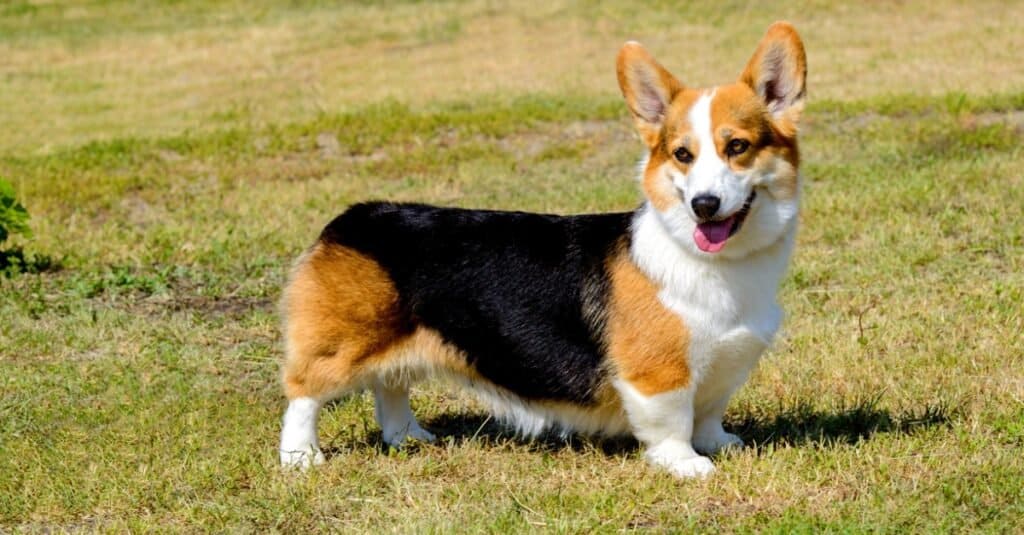
©iStock.com/volofin
Corgis have achieved fame because they are beloved by Queen Elizabeth II, who has kept them since she was a child. But corgis were not bred to be pampered royal pets but as cattle dogs. That they are small and cattle are large means nothing. The dog drives the huge beast by nipping at its heels. Indeed, Her Majesty’s corgis aren’t above nipping at her heels if she doesn’t get a move on.
There are two breeds of the corgi, Pembroke Welsh, and Cardigan Welsh. Cardigan corgis have a long tail and the tail of the Pembroke corgi is stubby. The Pembroke also has a “foxier” looking head. Both are long-bodied dogs, but the Cardigan is a little bit bigger. It stands about 10.5 to 12.5 high at the shoulder and weighs 25 to 38 pounds. The Pembroke Corgi stands 10 to 12 inches at the shoulder and weighs between 20 and 26 pounds.
2. Giant Schnauzer

©iStock.com/Nemyrivskyi Viacheslav
Another of the cattle dogs, the look of the giant schnauzer is unmistakable. It is rather a large dog, and the largest of the three schnauzer breeds, standing as high as 27.5 inches height the shoulder and weighing up to 77 pounds. Its deep chest and strong front legs allow the dog to keep up with and guide its bovine charges on the ranch. But of course, its elegant head, with its flat forehead, mustaches, and chin whiskers — the word “schnauzer” is from a German word that refers to the dog’s mustaches — give this loyal dog away. This herding dog’s origins can be traced back to 15th century Germany when it was developed from other cattle dogs crossed with smaller schnauzers.
3. Finnish Lapphund

©iStock.com/Ilona Didkovska
This spitz-like dog with a bushy tail that curls over its back were bred in Finland by the Lapp people to herd reindeer. It is a moderate size dog that stands about 18 to 20 inches high at the shoulder and weighs between 44 and 47 pounds, usually. It has a squarish skull and a profile that’s more vulpine than wolflike. Its long, fluffy coat keeps it warm during Arctic winters and powerful hindquarters give it the speed to keep up with the reindeer it herds. Another reindeer herding dog, the lapinporokoira, is very similar, though its tail is held curled against its thigh as opposed to over its back.
4. Shetland Sheepdog
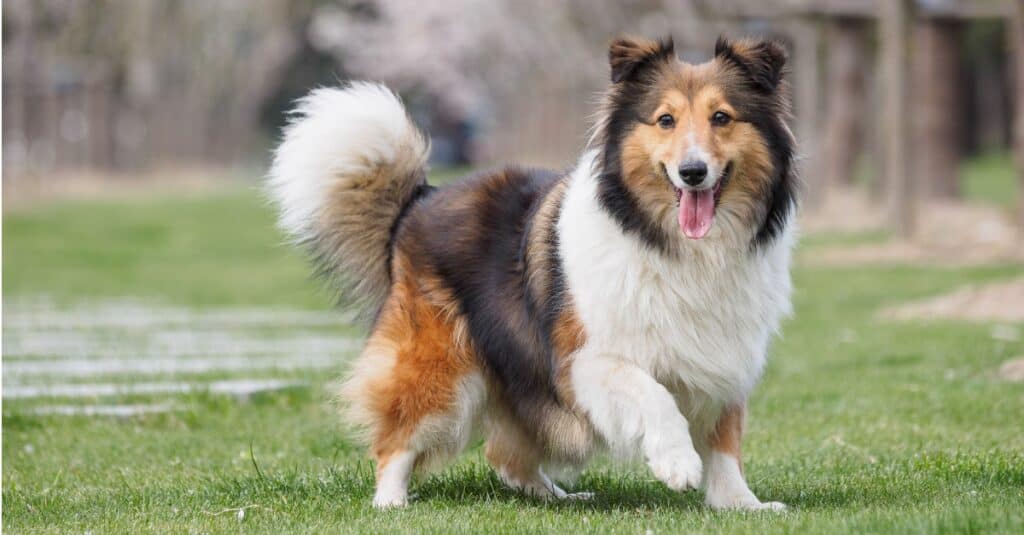
©iStock.com/yanjf
This small sheepdog is a miniaturized version of the rough collie. Standing only 14 inches at the shoulder and weighing only 14 to 16 pounds, it has the same beautiful, long, rough double coat and a long body with the feathering on the front legs and the lush mane. The one difference is that it is allowed to come in more colors than the rough collie if it’s going to be shown. The dog was developed on the Shetland Islands in the 1700s and is known for being intelligent and dedicated to its human.
5. Border Collie

©iStock.com/Jess Wealleans
Known for its intelligence and responsiveness, the border collie was developed to herd sheep in 18th century Britain. It’s a medium-sized dog that stands 18 to 21 inches high at the shoulder and weighs between 30 and 44 pounds. It can usually be told by its black and white coloration, though other color types are allowed if the dog is shown. Its coat can be short or longish, and it has strong hindquarters and a smooth and graceful gait that helps it in its work on the sheep ranch.
6. Briard

©iStock.com/Aleksandr Zotov
One of the bigger herding dogs at 75 pounds, the Briard was developed in 13th century France to herd and guard all manner of livestock, especially sheep. Named after the town of Brie, it is not only big but muscular and comes with an abundance of fur that even covers the dog’s eyes and ears. The coat is dry and just slightly wavy to protect it against the elements. The best thing about the dog is its powerful forelegs and hindquarters that give it speed and allow it to keep pace with its charges. Another interesting thing about the Briard is that it has double dewclaws. Despite its size, the dog is excellent with children as well as sheep.
7. Bouvier des Flandres

©iStock.com/~User7565abab_575
Another big dog that resembles a giant schnauzer, this dog originated in 17th century Belgium to herd cattle. Unlike the schnauzer, its coat is coarse, curly, and a bit messy. Instead of mustaches, the Bouvier des Flandres has a beard and bushy eyebrows. As appropriate for a type of herding dog that works on a cattle ranch, it has a powerful body, with a deep chest and strong neck, shoulders, and thighs. This brave dog not only has what it takes to herd cattle but saw service as a messenger dog during World War I.
8. Pumi
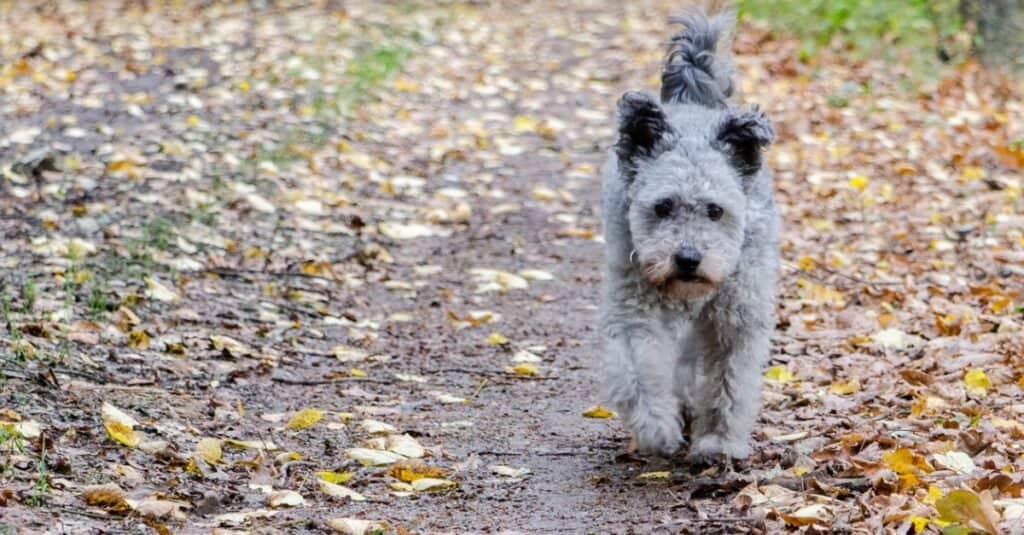
©Barita/Shutterstock.com
This pert little dog with its funny, curling, upright ears was bread in 11th century Hungary to herd cattle. It was bred from the puli, which is one of the types of sheepdogs and is famous for its coat of “dreadlocks.” The pumi is a type of herding dog that is a somewhat smaller dog that stands between 13 and 19 inches high at the shoulder and weighs between 18 and 29 pounds. It has also lost the puli’s dreadlocks, and its coat is now simply thick and curly, with a curly tail to go with the curly ears.
10. Australian Cattle Dog
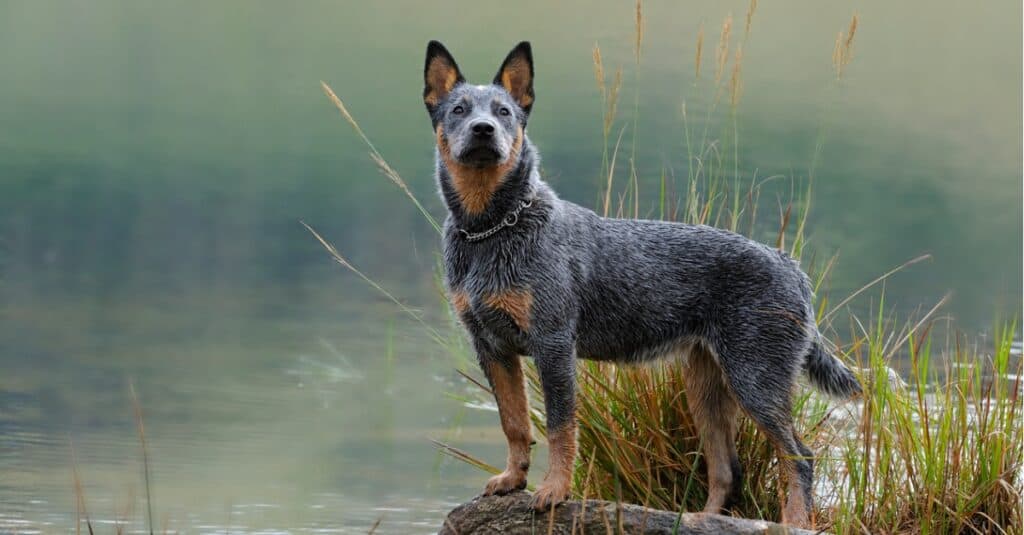
©iStock.com/WOLFAVNI
This sturdy, strong type of herding dog of plain looks is one of the best dogs to drive Australian cattle to the stockyards, a daunting task given the terrain and climate of the island continent. It makes up in sheer stamina and endurance what it might lack in speed. This cattle dog was allegedly bred from a variety of breeds, including the dingo, Australia’s feral canine. Not only is this medium-sized dog exceptionally tough, but it’s long-lived. The oldest Australian cattle dog, Bluey, allegedly lived to be over 29 years old. Even if they don’t live that long, Australian cattle dogs appear to live a few years longer than most other breeds.
11. Australian Kelpie
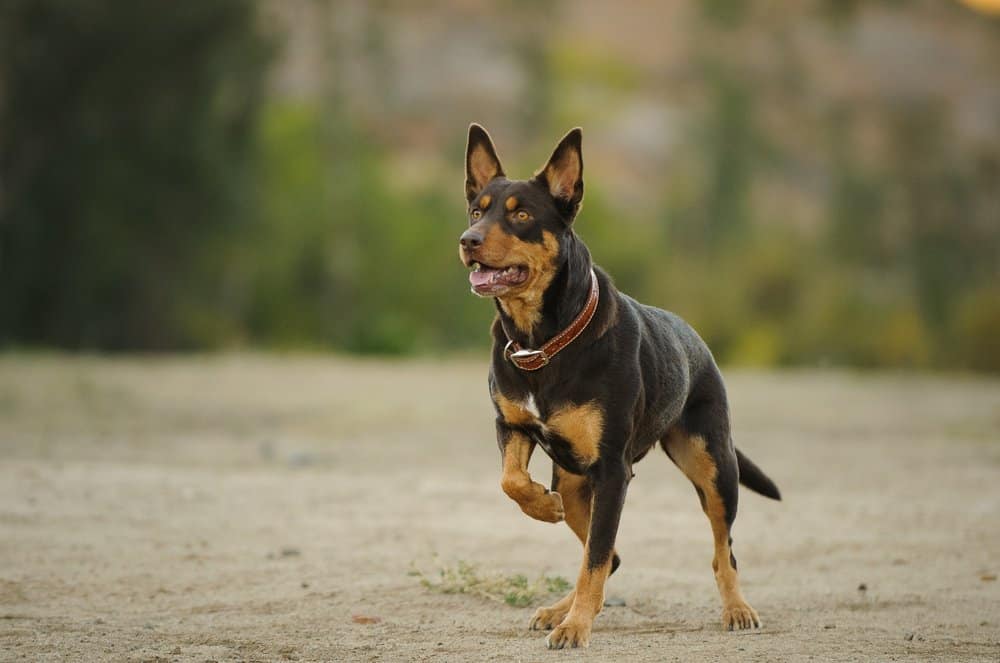
©everydoghasastory/Shutterstock.com
Though it shares its name with a mythological creature, there’s nothing otherworldly about this type of herding dog. Like the Australian cattle dog, it has unshowy looks, with erect ears, strong hindquarters and legs, a powerful neck, a deep chest, and an intelligent look about the face. Its tough outer coat resists harsh weather, and it has a dense undercoat to keep it warm. The Australian Kelpie’s coat is one color, and black kelpies are called “barbs.” Its backstory is interesting because it’s descended from a couple of English collies that were shipped to Australia in 1870. The offspring of this pair was then mated to a native whose name was Kelpie, and she gave her name to the entire breed.
12. Laekenois

©Marry Kolesnik/Shutterstock.com
This large and unique-looking dog is the least known of the Belgian sheepdogs. Standing between 22 and 26 inches high at the shoulder and weighing around 62 pounds, its coat looks curly but is actually wiry and pleasingly rough to the touch. Its front feet are round while its back feet are oval, and the toes have an arch to them. The ears are triangular and erect. One interesting thing about this dog was that it not only guarded and herded sheep but also guarded linen. One aspect of making linen was to leave it in the sun to bleach, and the Laekenois was set out to make sure it wasn’t stolen.
The breed which is named for Laeken, the town it originates from was also used as a courier during World Wars I and II and was targeted by enemy forces, as a result.
Although not as popular as the Malinois or the Tervuren (both Belgian), it is considered to be a Belgian Shepherd, just as they are.
13. Tervuren

©Ana Iacob Photography/Shutterstock.com
This dog is another of the types of sheepdogs developed in Belgium. Bred in the 1800s to herd all kinds of livestock, it looks like a long-haired German shepherd and though it stands about the same shoulder height at between 22 and 26 inches, it is less massive at around 62 pounds. Like the German shepherd, the Tervuren has powerful, muscular hindquarters, but doesn’t share that downward slope of the back. It looks very much like another Belgian sheepdog called the Groenendael. Breeders differentiate the two dogs by insisting that the Tervuren’s coat has black tips on the hairs, which gives the dog that German shepherd look.
Up Next…
Keep reading these posts for more incredible information about key animal facts.
- Types of Police Dogs: They’re right there making society a safer place with skills only a canine can possess. Read about them and what they do and the special qualities that make them so effective.
- Types of Husky Dogs: Wolflike, energetic, and talkative, huskies have become one of the most popular breeds. Read all about what makes them so special.
- Types of Retriever Dogs: They were bred to catch game, hence their name. Find out about the different breeds of this category of canine which is hardy, yet friendly and intelligent.
The photo featured at the top of this post is © Marry Kolesnik/Shutterstock.com
Ready to discover the top 10 cutest dog breeds in the entire world?
How about the fastest dogs, the largest dogs and those that are -- quite frankly -- just the kindest dogs on the planet? Each day, AZ Animals sends out lists just like this to our thousands of email subscribers. And the best part? It's FREE. Join today by entering your email below.
Thank you for reading! Have some feedback for us? Contact the AZ Animals editorial team.







